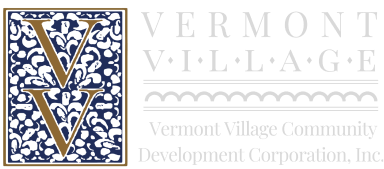
The Vermont Village Community Development Corporation has recently been awarded a Non-CFCI Program Area 8 Funding Opportunity. The Third-Party Administrator is Epidaurus DBA Amity Foundation. Under the Non-CFCI Funding Opportunity – Program Area 8: Grant is Justice-Focused for CBOs from the $7.65 Million in The American Rescue Plan Act funding to community-based organizations in LA County that serve individuals and families impacted by the criminal legal system.
The Prison Policy Initiative estimated that in the United States, about 2,298,300 people were incarcerated out of a population size of 324.2 million.
This means that 0.7% of the population was behind bars. Of those who were incarcerated, about 1,316,000 people were in state prisons, 615,000 in local jails, 225,000 in federal prisons, 48,000 in youth correctional facilities, 34,000 in immigration detention camps, 22,000 in involuntary commitment, 11,000 in territorial prisons, 2,500 in Indian Country jails, and 1,300 in United States military prisons. Vocational training and other work programs for this population pose a challenge for our community. The influence of drugs on crime is widely recognized, and more efforts should be focused on expanding drug abuse treatment. Many communities are plagued by a number of high-risk groups. All the factors mentioned in this narrative are symptoms of the situation in South Los Angeles. It is challenging to divide our focus onto one group. However, we intend to address the needs of former members, long-term unemployed individuals, parolees at various levels of risk, and youth seeking a change in life.
Currently, Vermont Village Community Development Corporation was awarded a Non-CFCI Program Area 8 Funding Opportunity. The Third-Party Administrator is Epidaurus Inc. dba Amity Foundation. Under the Non-CFCI Funding Opportunity – Program Area 8: Grant is Justice-Focused for CBOs from the allocated $7.65 Million in American Rescue Plan Act funding to community-based organizations in LA County that serve individuals and families impacted by the criminal legal system.
Prison Policy Initiative estimated that in the United States, about 2,298,300 people were incarcerated out of a population of 324.2 million.
This means that 0.7% of the population was behind bars. Of those who were incarcerated, about 1,316,000 people were in state prison, 615,000 in local jails, 225,000 in federal prisons, 48,000 in youth correctional facilities, 34,000 in immigration detention camps, 22,000 in involuntary commitment, 11,000 in territorial prisons, 2,500 in Indian Country jails, and 1,300 in United States military prisons.[4] Vocational training or work programs for this population is a challenge for our community. Recognizing the influence of drugs in crime, more efforts should be placed on expanding drug abuse treatment. Many communities are plagued with a number of high-risk groups. All of the factors named in this narrative are symptoms of this South Los Angeles. To say that our focus is going to be on one group is difficult to divide. However, it is our intent to deal with the former gang members, long term unemployed, and parolees at certain levels of risk and youth seeking a change in life.
Homelessness, lack of education, the absence of recreational and community centers, and violence in our communities, schools, and parks have been chronic problems for decades. Trauma significantly affects families and workers, leads to poor relationships with law enforcement, and contributes to mental health disorders in our community. We work to prevent youth from becoming homeless, help families that lack the ability to maintain unity and prevent youth from being victims of a system that prioritizes felony charges over diversion programs. Re-entry and alternatives to incarceration of those coming into contact with law enforcement are slowly being implemented within the justice system.
Today’s picture of our situation in the community is such that many people have been or are under some supervision or assistance. Therefore, the dilemma for VVCDC becomes how to help reintegrate individuals into society through workforce or educational opportunities after receiving welfare for an extended period, homelessness, on SSI, general relief, and/or long prison terms. Housing costs and rents are out of control, and there is a lack of affordable housing for every segment of the population. We currently provide rooms for rent in our Boarding homes to help the re-entry dilemma for housing demands.
Homelessness, lack of education, recreational and community centers, violence in our communities, schools, and parks have been chronic problems for decades. Trauma exposed families and workers, poor relations with law enforcement, mental health issues and many other disorders in our community. Foster youth becoming homeless, families not able to maintain the family units, youth being victims of a system that hands out felonies, rather than diversion programs. Re-entry and Alternatives to Incarceration of those coming in contact with law enforcement is slowly being implemented through the justice system.
The picture today for out plight in the community; is such that many people have been or currently are under some type of supervision or assistance, and therefore the dilemma for VVCDC becomes “how to” assimilate people back into the mainstream via the work force or education, after welfare for a number of years, homeless, on S S I, general relief, and/or long prison terms? Housing and rents are out of control, the lack of affordable housing for every segment of the population. We currently provide rooms for rent in our Boarding homes to help the re-entry dilemma for housing demands.

